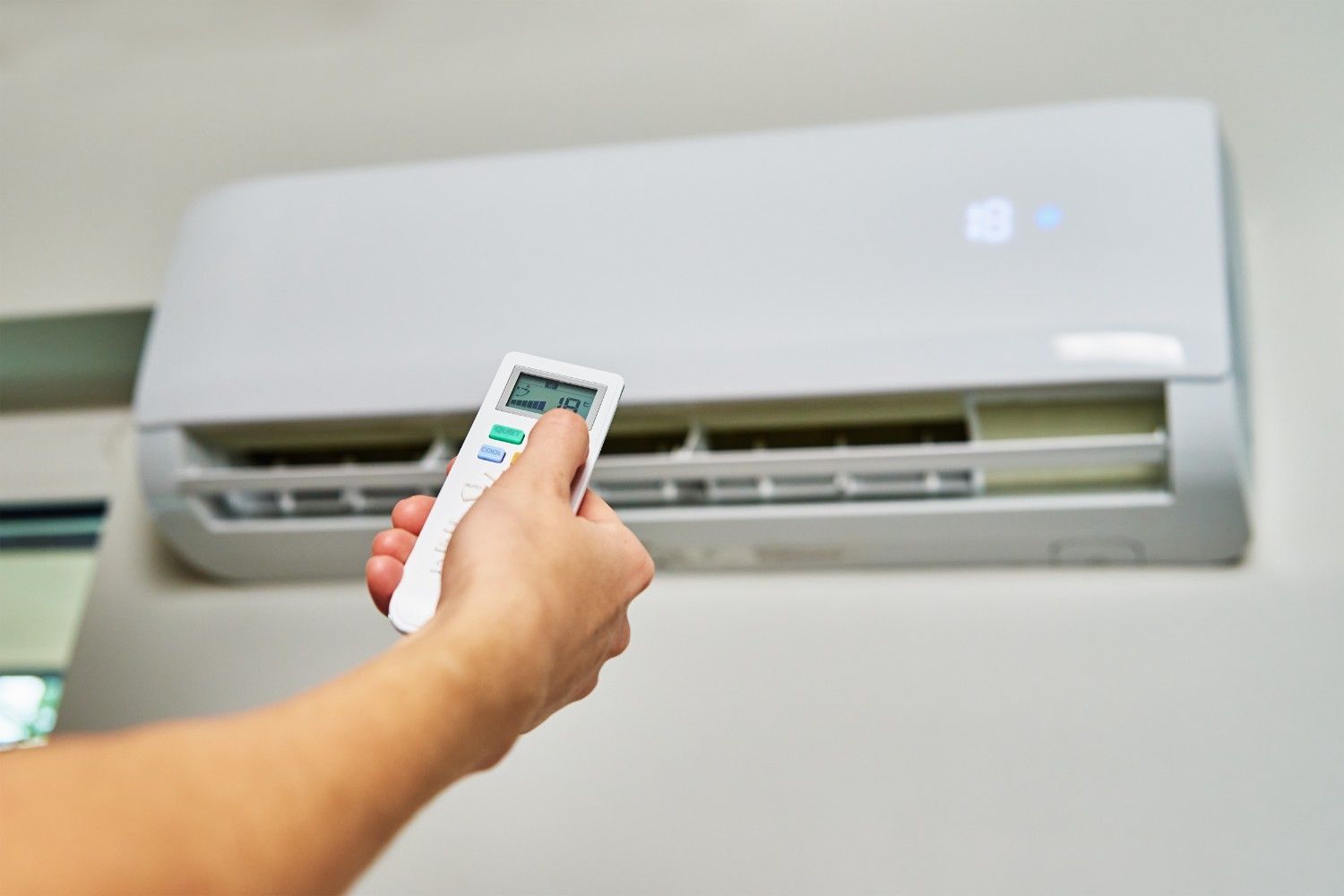If your air conditioner is running but not blowing cold air, you’re not alone — this is one of the most common HVAC issues homeowners face during the summer. The unit hums, the fan spins, and yet the air coming through your vents feels disappointingly warm. This problem often stems from airflow restrictions, low refrigerant, or other mechanical issues.
The good news? Many of these problems are preventable with a bit of maintenance and a structured troubleshooting approach. Let’s break down what’s happening, how to fix it, and when to call in a professional.
Quick DIY Checks Before You Call a Technician
Before you schedule a service visit, start with these basic checks — they often solve the issue without professional help.
1. Verify the Thermostat Settings
Make sure the thermostat is set to “Cool” and the target temperature is lower than the room temperature. If it’s accidentally set to “Fan” or “On,” the system will only circulate air without activating the cooling cycle.
2. Replace or Clean the Air Filter
A clogged filter restricts airflow and can even cause the evaporator coil to freeze, preventing the system from cooling efficiently. Replacing filters every 1–3 months keeps airflow smooth and cooling performance strong.

3. Inspect the Outdoor Condenser Unit
Go outside and check if the condenser is covered with dirt, leaves, or debris. Restricted airflow around the unit can make it struggle to release heat — meaning warm air indoors. Clean the fins gently with a garden hose if they’re dusty or blocked.
4. Check Supply and Return Vents
Make sure all vents are open and unobstructed by furniture, curtains, or rugs. Closed vents throw off airflow balance, making it seem like your system isn’t cooling at all. If these steps don’t fix the issue, it’s time to look at deeper causes that typically require professional service.
Deeper Issues That Need a Professional Fix
The following are common mechanical or system-level problems that can make your AC run but fail to blow cold air.
| Issue | What Happens | Why It Matters |
| Low or leaking refrigerant | Ice buildup or hissing near coils | Without enough refrigerant, the system can’t absorb heat, leading to warm air. |
| Frozen or dirty evaporator coil | Ice forms on indoor coils, restricting heat exchange | The coil can’t transfer heat effectively, resulting in weak or warm airflow. |
| Faulty compressor or capacitor | Outdoor fan runs but no cold air comes out | The compressor drives the cooling process; failure here stops cooling entirely. |
| Leaky or damaged ductwork | Cool air escapes before reaching vents | Duct leaks waste energy and reduce indoor comfort. |
| Oversized or undersized AC | Cycles too often or runs too long | Mismatched sizing reduces cooling efficiency and increases energy costs. |
Step-by-Step Troubleshooting Process

Here’s a structured way to approach the “AC running but not cooling” problem effectively.
Step 1: Start With Simple Checks
Confirm the thermostat, air filter, and outdoor condenser are all working correctly. Most issues start here.
Step 2: Turn the System Off if You Suspect Ice or a Leak
If you see ice on the evaporator coil or hear hissing sounds, switch off the system. Running it in this state can damage the compressor.
Step 3: Look for Warning Signs
Ice buildup, strange noises, or unusually long run times indicate deeper problems like refrigerant issues or motor failure.
Step 4: Call a Licensed HVAC Professional
For refrigerant handling, electrical issues, or ductwork leaks, always hire a certified technician. DIY repair attempts can void warranties or violate local codes.
Step 5: Schedule Routine Maintenance
Regular tune-ups prevent 80% of cooling problems. Technicians can clean coils, test refrigerant pressure, and inspect ducts before summer heat peaks.
Smart Maintenance Tips to Prevent Recurrence
- Replace air filters every 1–3 months (more often if you have pets).
- Keep the outdoor unit clear of plants and debris for unrestricted airflow.
- Seal and insulate ducts to prevent leaks and maintain pressure balance.
- Avoid placing thermostats near windows or heat-producing appliances.
- Schedule professional maintenance before each cooling season.
When to Consider Replacing Your AC Unit

If your system is over 10–15 years old, needs frequent repairs, or struggles to maintain consistent comfort, it may be more cost-effective to consider a replacement. Modern AC units are not only more efficient, quieter, and environmentally friendly but also come with advanced features like smart thermostats, variable-speed compressors, and improved humidity control. Investing in a new system can lower your monthly energy bills, reduce maintenance costs, and enhance your home’s overall air quality.
Also Read: air conditioner freon refill cost
Frequently Asked Questions
Q1: Why is my air conditioner running but blowing warm air?
This usually happens when the blower is working but the cooling system isn’t. Possible causes include a dirty air filter, incorrect thermostat settings, or low refrigerant levels.
Q2: Can I fix this problem myself?
You can handle basic maintenance tasks — like cleaning the condenser, replacing the air filter, and checking thermostat settings. But refrigerant leaks, compressor failures, and duct issues should be left to professionals.
Q3: How often should I replace my AC filter?
Typically every 1–3 months. If you have allergies, pets, or heavy usage, monthly replacements are best.
Q4: What are the signs of a refrigerant leak?
Hissing sounds near the coils, ice buildup, longer cooling cycles, or weak airflow. If you suspect a leak, shut the system off and call a professional immediately.
Reference:
Q5: Is it safe to keep running the AC if it’s not cooling?
No. Running the system while frozen or low on refrigerant can damage the compressor — one of the most expensive components to replace.
Conclusion: Keep the Cool Air Flowing
So if your air conditioner is running but not blowing cold air, don’t panic. Start with the basics: check your thermostat, replace the filter, clear the outdoor unit, and ensure vents are open. If none of those resolve the problem, you’re likely dealing with something more serious—like a refrigerant issue, frozen coil, compressor malfunction or duct leak—and you’ll want to call a qualified HVAC technician.
Taking timely action not only restores comfort but also protects your system and wallet from escalating repair costs. Regular maintenance is your best ally in keeping the cold air flowing reliably.










